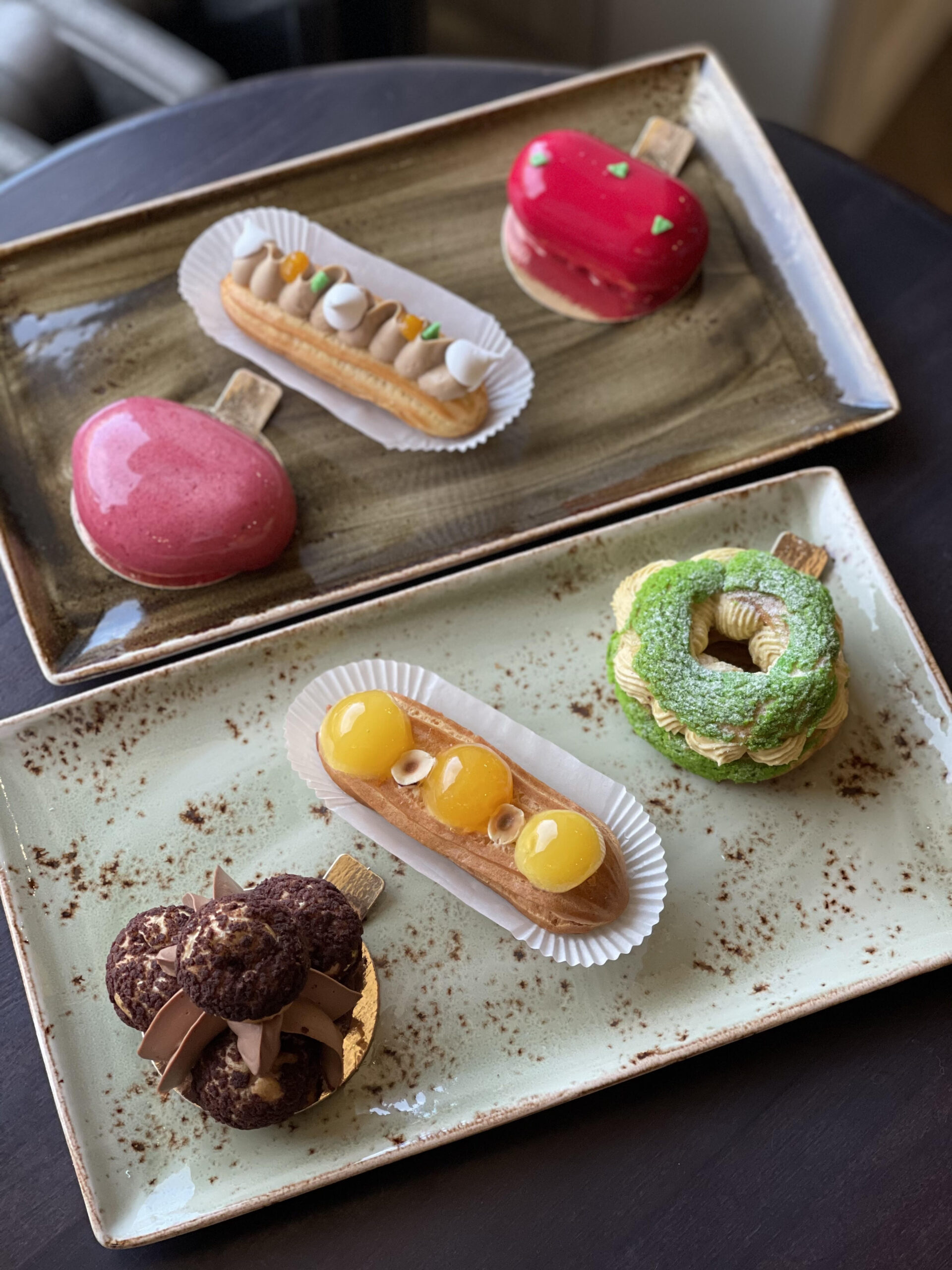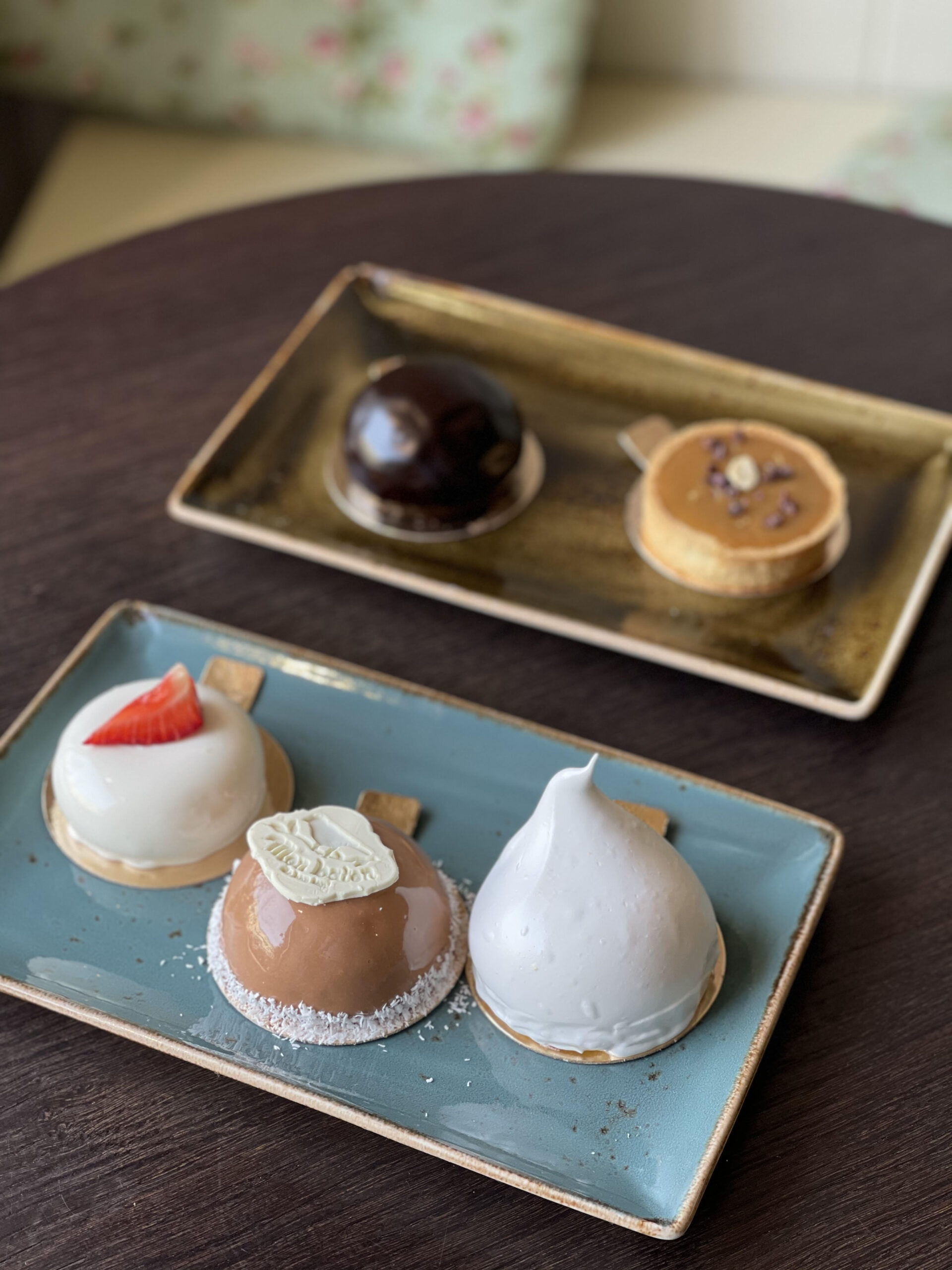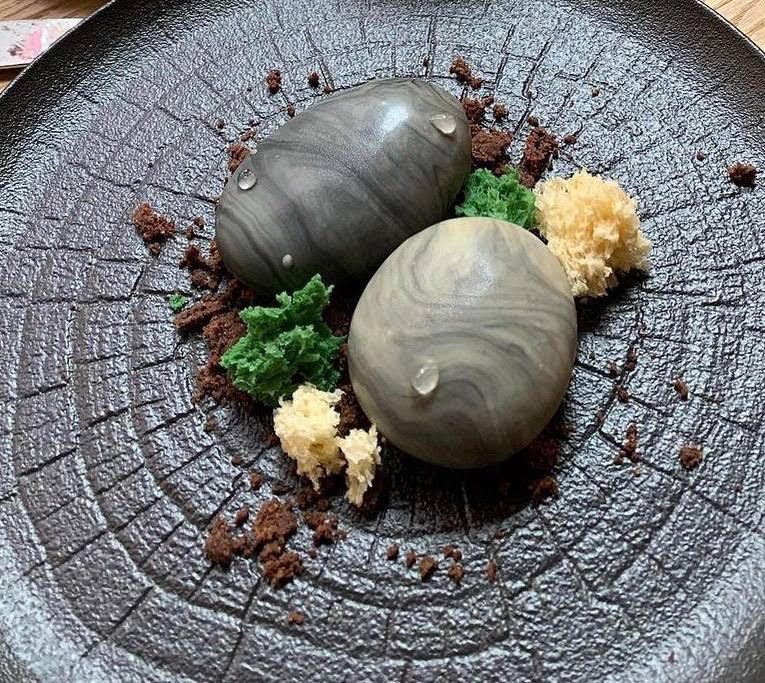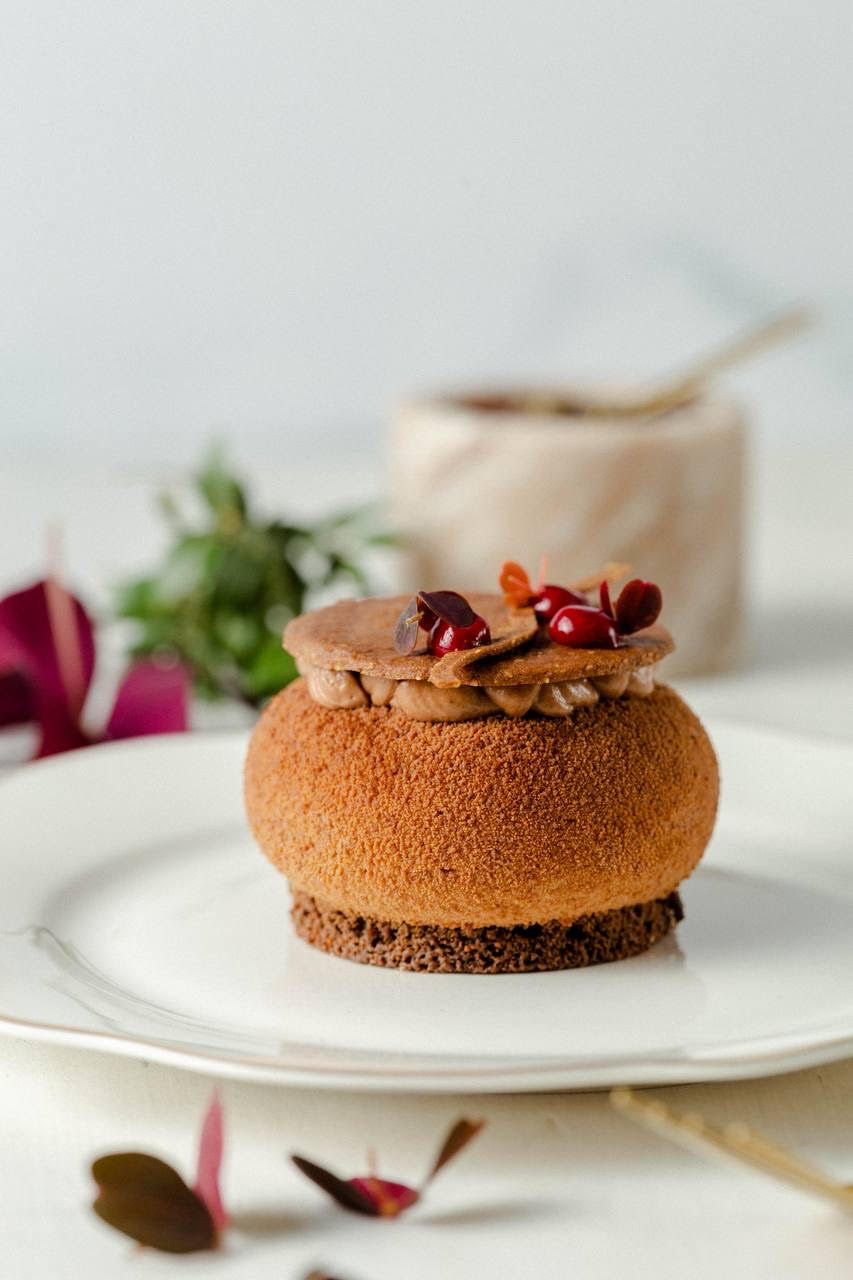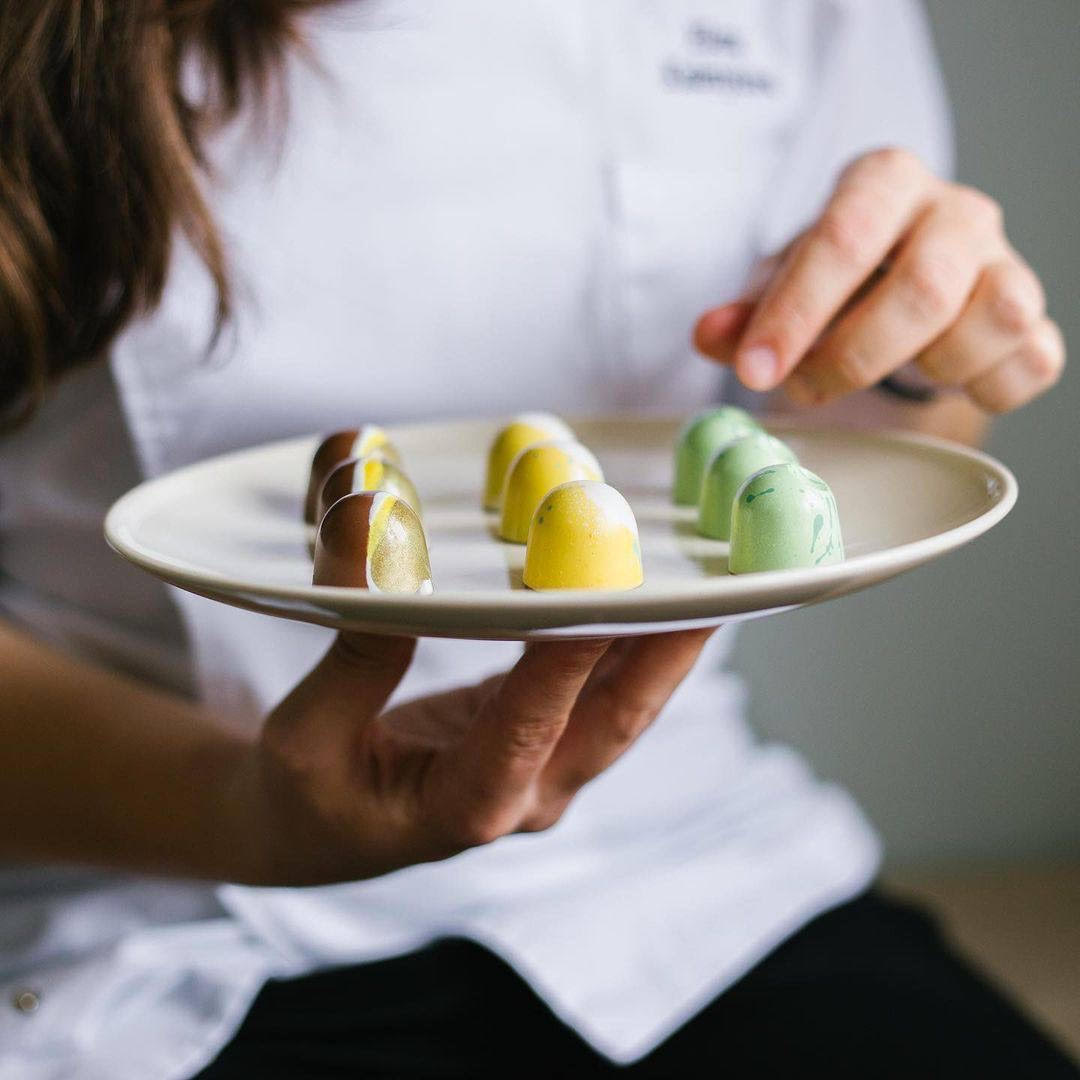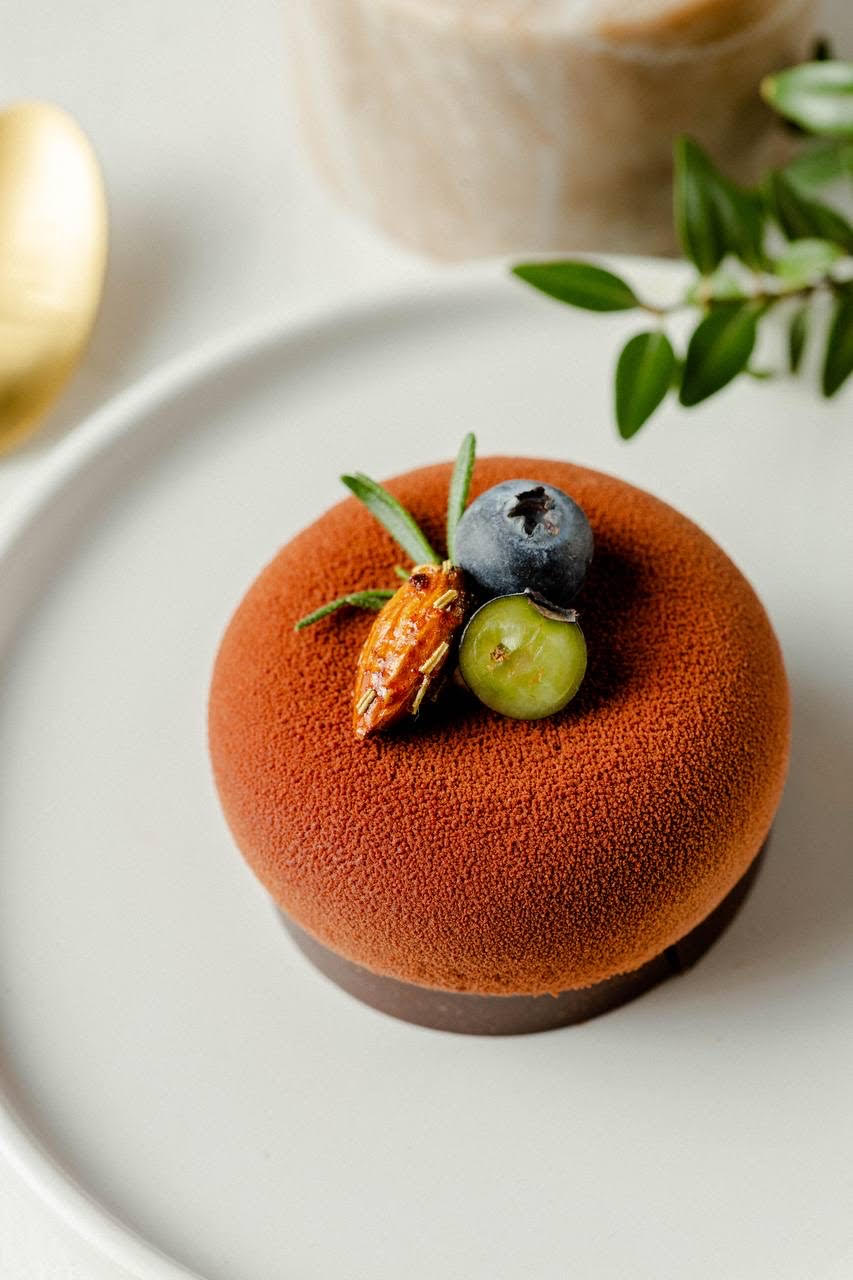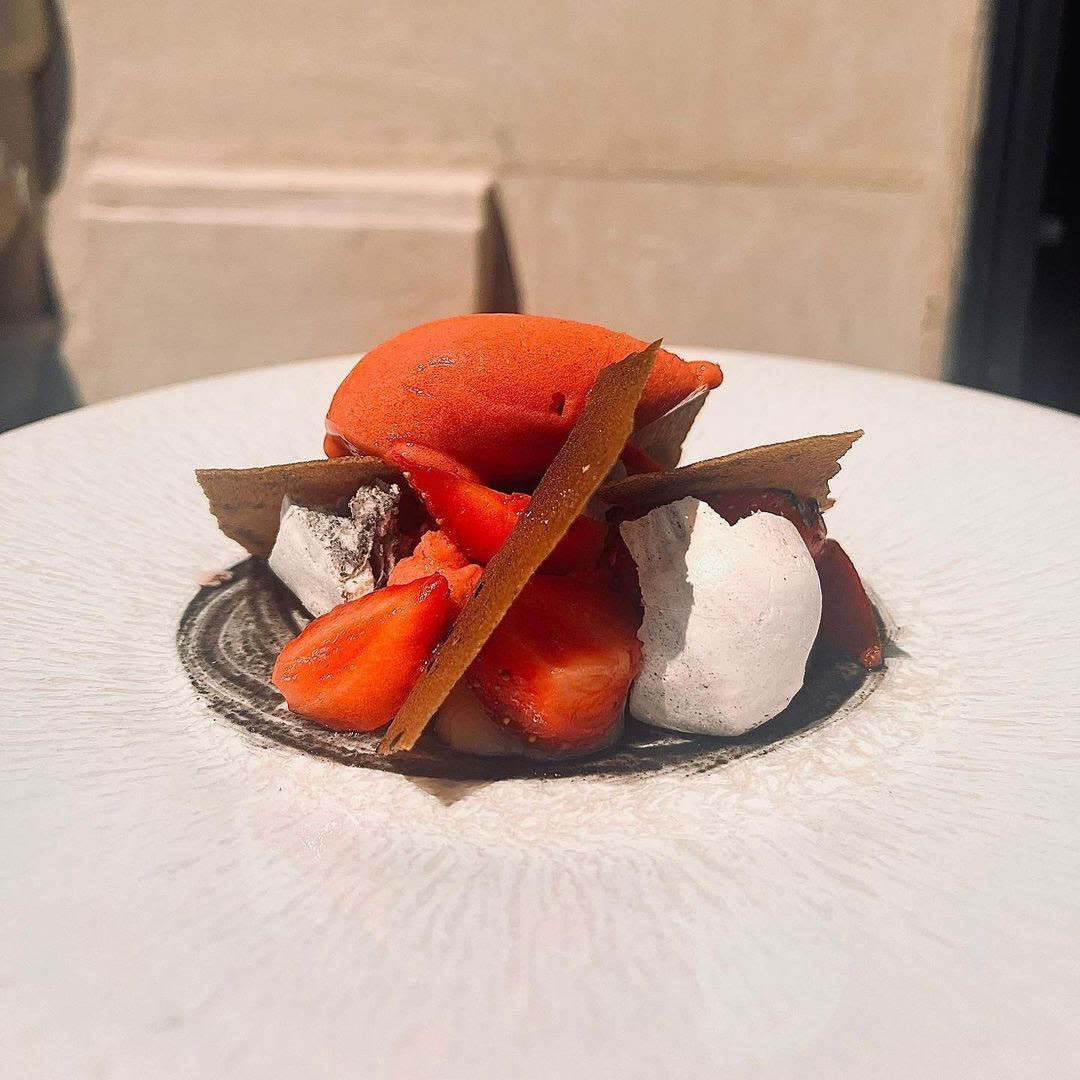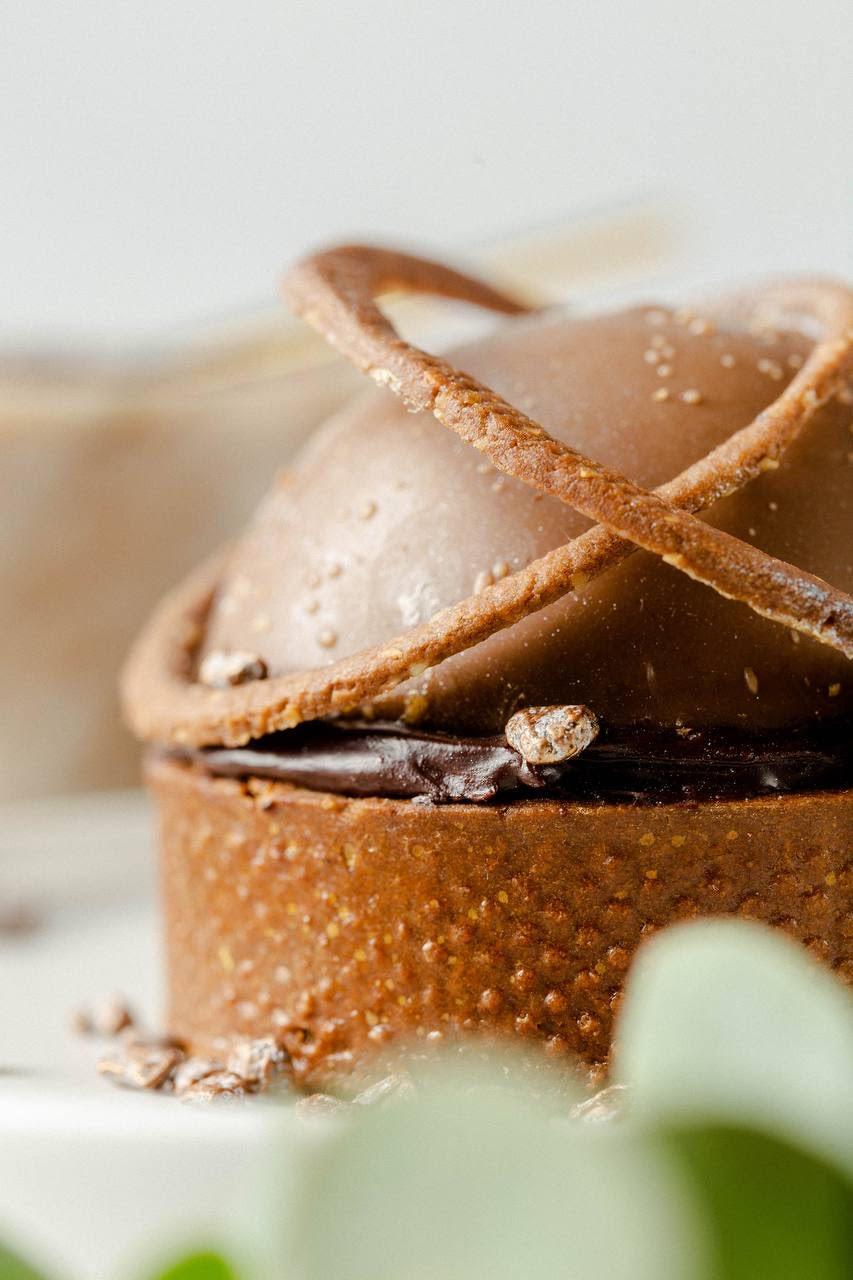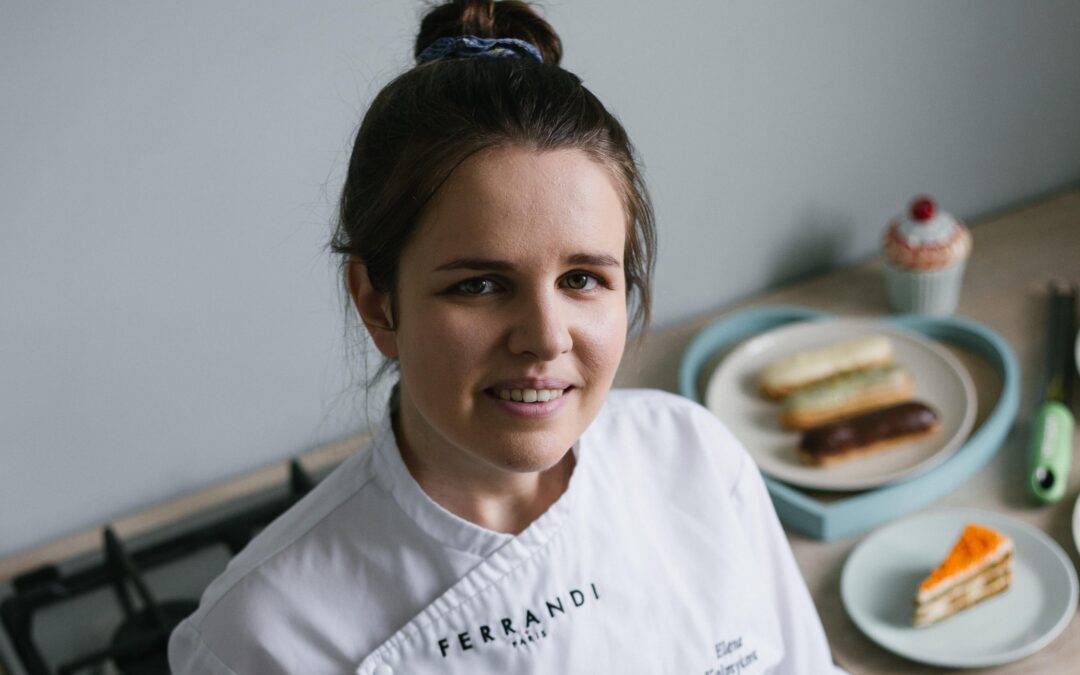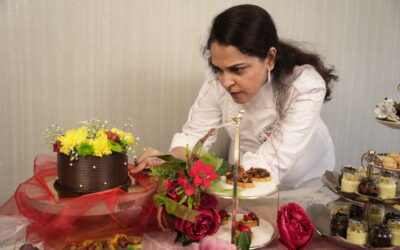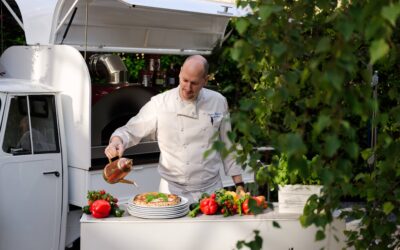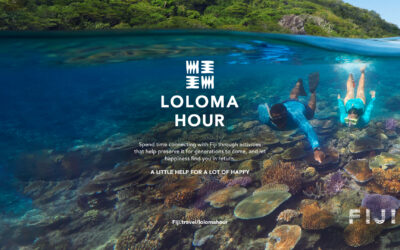Elena Kalmykova is a passionate pastry chef with a pastry diploma from the oldest culinary institution in France, Ferrandi Paris, and more than 3 years of experience in prestigious Parisian establishments, Café Pouchkine, an exquisite pastry shop, Le Pavillon Ledoyen, a 3 star Michelin restaurant and Trianon Palace, a 5 star hotel. Her passion lies especially in the field of healthier and lighter desserts without the use of animal ingredients, with less sugar, lactose and gluten. She is equally interested in working with less well-known ingredients used in cocktails/other beverages/savoury food to make desserts stand out and be original in taste and texture.
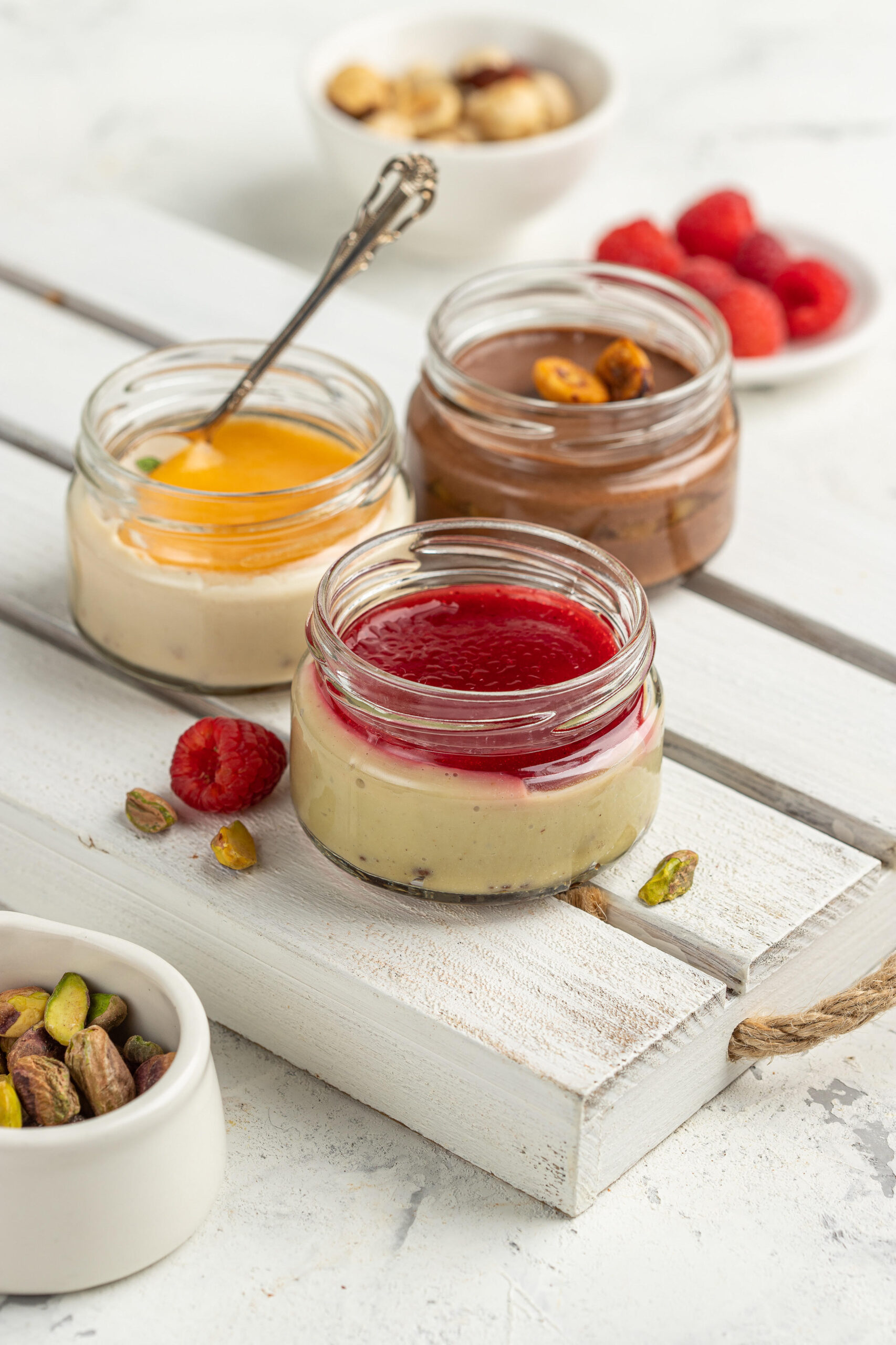
From September 2020, Elena and her team of four R&D specialists help HoReCa and retail businesses globally increase their revenues by improving and optimizing the current menu and also introducing new desserts their clients want to see. Finding tailor-made solutions to issues in businesses on all stages of development is at the core of the team’s work. With Elena and her team currently working on more than ten projects in four countries, they are eager and happy to assist gastronomy businesses attain new financial goals and target new markets.

What inspired you to become a pastry chef? You’ve been in the industry for quite some time. Would you have done anything differently when first starting out?
I started out when I was still studying history at university in 2014 and I just simply loved doing what I did, baking mostly cakes and other desserts for friends and family. I realized I don’t think I would have changed anything since making the mistakes I have made and doing the things that way was the experience needed to bring me where I am now. I would be less hard on myself if I were to recommence, however even this perfectionism trait has helped me a lot to become a demanding professional today.

What is the philosophy and ethos behind the food you create?
Keep it seasonal and simple, but don’t forget to surprise yourself and others! I love working unusual taste combos, solving gastronomic challenges and making the desserts healthier by using a wider variety of sugars and flours. My philosophy is to adapt to my client’s needs and deliver a tailored solution whilst bringing out the best from what I know and from what I learn every day.

What’s the latest trend when it comes to baking and patisserie? What is one food (pastry) trend you wish would just go away?
Healthier desserts is huge and, of course, every week there is something coming up on TikTok. A trend that I really want to see develop is seeing more personalized experiences throughout the gastronomic offers and really healthier options, not simply gluten-free with a lot of starch and very little nutritional value. Seeing more people in the industry practice zero-waste is also something I enjoy seeing develop.
What’s your favourite comfort food? What’s your favourite pastry or cake or baked product ?
I think it changes greatly from season to season, with the citrus, persimmon, plum and quince being in season, I love to find interesting taste combos, taking, for example, lemons, limes, and clementines as a base and adding spices, teas, coffees on top. As for myself, I love a generous green salad with fats and oils that will keep me full for a few hours at least. Regarding very common food habits one may have, I don’t fancy pasta or pizza much, since I feel hungry fairly fast after that.
Who or what was your inspiration to become a pastry chef?
It was a natural interest I had for the subject since I was baking almost every time I had a spare minute. This ardent passion for desserts was something that helped me a lot through my Michelin experiences – despite the stress and anything that was happening around me, my main focus was what I was doing, this passion for food, for the products at the heart of my actions. I still apply this approach during difficult times since I love what I do and I can choose to focus on that in the first place.
What is your advice to aspiring pastry chefs?
Never give up if you know that you have capabilities and the passion to excel. On your way up there may be more than one demotivating chef, boss or someone who may be not very nice to you personally. If you can approach the situation with honesty and say to yourself that you did your best, you will grow. Admit your mistakes but try not to fret if the person causing pain is attacking your personality.
Future Plans?
Build a global team of 30 consultants ready to address any issue in baking and confectionery sectors (any difficulty, region, stage of business) around the globe with me being a supervisor and mentor for the team. A fairly ambitious aim to complete by the beginning of 2025!

Would you consider yourself as an artist? Are you inspired by artists when you create your pastries? When you create different products everyday where do you get inspired from?
I am definitely an artist, however I think my art is still subject to a sort of modification and filtering when I put it on a plate at my restaurant or when I make something for a client. It is art still !
To inspire, I look a lot at paintings, architecture, nature. However most of the times I take a look at the product that I want to work with itself – what shape does it have? How can I compliment it or enhance it?

The topic of local food, from smaller, specialized and personally known producers, is becoming more important. What are some of your local partners from whom you source?
I have a great honey producer from the Grenoble region, – it’s not completely local since it’s more than 150 km but it’s still French and great quality. I have a honey parfait I put on the menu with his dandelion honey, floral and slightly dusty on the palate. I am proud of it since I pair it with a cacao pulp, or mucilage sorbet with an apricot and honey aftertaste.
What would you say is the key/winning feature of your creations ?
Seasonal tastes and unusual flavour combos!
What are the most important considerations when crafting your menu?
Food-cost, pastry lab capacity and the professionalism of the team who is going to produce it. The potential client portrait, i.e. the final consumer, is equally important as well since the product has to be attractive to a particular audience.

Have you ever considered being a vegan chef? How practical is it being a pastry chef?
Vegan – yes, however I haven’t switched to vegan just yet since I feel that this philosophy doesn’t correspond fully to what I aspire to do. Making vegan desserts most of the times entails using products like coconut that travel around the globe to make it to our plates and I think using local alternatives is something I find more interesting in terms of environmental protection.
What’s your signature dish?
I love working with citrus fruits and I think it could easily be a yuzu pavlova with champagne and lemon sorbet, chamomile and elder-flower cream and fizzy white chocolate snow.

How can restaurants/ hotels/ chefs communicate the approach of innovative sustainable plant-based food/ food chains to others?
Launch conferences and send spokespeople to talk about it, and, of course, include innovative solutions in their plates and dishes served in these establishments. Chefs can broaden their horizons by trying out new alternatives to dairy and other traditional ingredients.
Which is the dish you’ve created that you are most proud of and why?
I don’t have one, I can say I am just generally proud of the consistency behind the things that I do and my energy to keep going even when there is less hope than usual or when the conditions to excel are not as favourable. I am a huge optimist and I believe that there is always a will and a way out.
Vegan milk chocolate
How can we replace dairy in chocolate when we are talking vegan? If you’re just starting out and you don’t have a ready-made solution yourself, this recipe is for you. Spoiler – you can also add spices or even ground tea to chocolate, for example, a smoked Lapsang Souchong tea will work wonders.
Ingredients:
- Coconut sugar – 90 g (will give a caramel flavour to chocolate, if food cost is important – take finely ground powdered sugar)
- Cocoa powder – 40 g
- Vanilla paste or vanilla powder – 1 g (if food cost is key, use 5 g of vanilla sugar and 5 g less of the sugar above)
- Powdered oat milk (or other plant-based version) – 15 g
- Salt – 2 g
- Cocoa butter – 250 g
- 100% cocoa (cocoa mass) – 28 g
- Almond butter – 40 g (I recommend cashew, it is the fairly neutral in taste)
Method :
- Blend powdered coconut sugar or sugar, cocoa powder, vanilla, dry milk, and salt in a blender for 30-40 seconds, so that all dry ingredients become a homogeneous mass of very small dispersion. This is important for the chocolate to be smoother.Prepare a water bath so that steam does not rise above the bowl (the bowl should fit tightly to the pot). Place cocoa butter and 100% cocoa in a bowl.
- Melt the butter and cocoa mass at 42°C, stirring with a dry silicone spatula – this is important for the final texture of the chocolate.
- As soon as the butter and mass have melted, remove the bowl from the bath, but do not remove the bath itself – we will use it later. Pour the cocoa butter and mass into the blender with the dry ingredients, add the butter, and blend for another 20-30 seconds at high speed.
- Pour the chocolate into a bowl and cool to room temperature, stirring constantly, until it reaches 28°C (it is preferable to use a pastry thermometer that measures the mass underneath the surface as the surface may be colder than the entire mass of chocolate).
- Return the chocolate to the water bath and heat it to 31°C. Remove from the bath as soon as it reaches this temperature, pour it into silicone molds of any size and shape.
- Let it cool at room temperature for 3 hours. The ideal temperature for this is +17-18°C. The refrigerator can make the chocolate turn white, so I recommend stocking up on patience and giving the chocolate time to cool naturally.
- You can place them in the fridge however for a short time.
- Et voila, your vegan chocolate is ready to cover bonbons and make a great hot chocolate if you wish!

